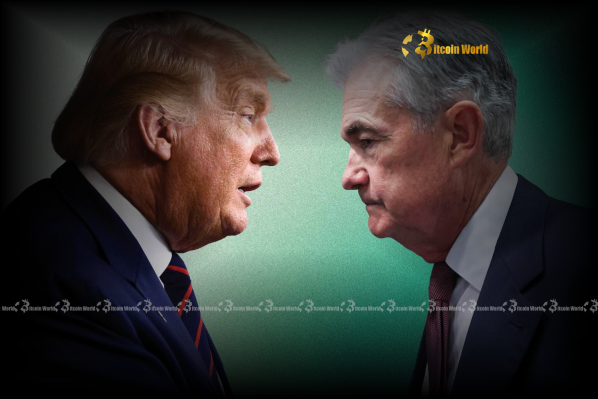BitcoinWorld

SNB Intervention: Decisive Moves to Prevent Swiss Franc Strength
Central bank decisions, particularly those from influential institutions like the Swiss National Bank (SNB), often seem to exist in a world separate from the fast-paced, volatile landscape of cryptocurrency. Yet, the actions taken by these financial behemoths to manage national currency values, such as the Swiss Franc strength, create profound ripples across global financial markets. These ripples can indirectly influence everything from traditional forex trading to the broader risk sentiment that shapes the digital asset space.
A recent analyst statement has brought the SNB’s proactive stance into sharp focus, suggesting the bank is poised to act, likely to prevent further “excessive CHF strength” in the near term. This isn’t just a technical detail for forex enthusiasts; it’s a critical signal about Switzerland’s economic health, its strategic positioning in the global economy, and the SNB’s unwavering commitment to its monetary policy objectives. But why is the SNB so determined to manage the Swiss Franc’s value, and what does this mean for the intricate currency market dynamics that impact global finance?
SNB Intervention: A Proactive Stance Against Unwanted Strength
The Swiss National Bank holds a unique position among central banks due to its long and often unconventional history of intervention in the foreign exchange market. While many central banks primarily intervene to prevent currency weakness that could fuel inflation, the SNB frequently steps in to curb excessive Swiss Franc strength. This proactive, almost defensive, approach is a cornerstone of their monetary policy, aiming to stabilize the economy, manage inflationary pressures, and protect the competitiveness of Swiss industries.
Historical Context and Past Actions:
- 2011 Euro Zone Crisis: Faced with massive safe-haven inflows during the European sovereign debt crisis, the SNB implemented a minimum exchange rate of 1.20 Swiss Francs per Euro. This was an unprecedented move, effectively pegging the CHF to the EUR to prevent its runaway appreciation.
- 2015 Unpegging: The abrupt removal of this peg in January 2015 sent shockwaves through global markets, demonstrating the SNB’s willingness to make bold, decisive moves when its policy framework is challenged. The unpegging led to a massive, sudden appreciation of the CHF, highlighting the inherent pressure for its value to rise.
- Post-2015 Interventions: Following the unpegging, the SNB continued to intervene, primarily through foreign exchange purchases, to counter the franc’s strength, often accumulating vast foreign currency reserves in the process.
The SNB’s Toolkit for Intervention:
The SNB employs a range of tools to influence the Swiss Franc’s value. While direct market intervention is often the most visible, other policy instruments play a crucial supporting role:
- Foreign Exchange Sales/Purchases: This is the most direct method. To weaken the CHF, the SNB sells CHF and buys foreign currencies (like EUR or USD) in the open market. This increases the supply of CHF, theoretically reducing its value. Conversely, to strengthen the CHF (less common, but possible), they would buy CHF and sell foreign currency.
- Interest Rate Adjustments: While interest rates are primarily set to achieve price stability, their impact on the exchange rate is undeniable. Very low or negative interest rates, which the SNB employed for years, make holding CHF less attractive, discouraging capital inflows and thus reducing upward pressure on the currency. Recent rate hikes by the SNB have made the CHF more attractive, creating a new dynamic where direct intervention might become more necessary if appreciation becomes excessive.
- Verbal Intervention (Jawboning): Often overlooked but highly effective, verbal intervention involves SNB officials making statements or issuing warnings about their discomfort with the CHF’s level. This can influence market expectations and discourage speculative buying, acting as a low-cost, preliminary tool before direct market action.
The analyst’s statement suggests that despite recent rate hikes aimed at combating inflation, the SNB perceives a renewed risk of the CHF appreciating too rapidly. This could stem from its persistent safe-haven appeal or a shift in global risk sentiment, prompting the SNB to signal its readiness for further SNB intervention.
Why Does Excessive Swiss Franc Strength Pose a Challenge?
While a strong national currency might intuitively seem like a sign of economic health and prosperity, for an export-oriented economy like Switzerland, an overly strong Swiss Franc strength can be profoundly detrimental. The SNB’s constant vigilance against it stems from several critical economic impacts:
- Impact on Exports: Switzerland is renowned for its high-value exports, including pharmaceuticals, machinery, watches, and precision instruments. When the CHF strengthens, Swiss goods become more expensive for international buyers. This reduces demand, erodes profit margins for Swiss exporters, and can lead to reduced production, job losses, and a decline in export revenues, which are vital for the Swiss economy.
- Tourism Sector Woes: Switzerland is a premier global tourist destination. An overly strong CHF makes holidays, accommodation, and services significantly more expensive for foreign visitors. This deters tourists, leading to lower occupancy rates for hotels, reduced spending in retail and hospitality, and a decline in overall tourism revenue.
- Deflationary Pressures: A stronger CHF makes imported goods and services cheaper in local currency terms. While this might seem beneficial for consumers in the short term, if persistent, it can contribute to lower inflation or even outright deflation. Deflation can stifle economic growth by discouraging spending and investment, as consumers postpone purchases anticipating even lower prices in the future. The SNB actively combats deflation to maintain price stability.
- Safe-Haven Dilemma: In times of global economic uncertainty, geopolitical tensions, or financial market turmoil, the CHF is often sought after as a safe-haven currency. This leads to massive capital inflows into Switzerland, pushing the CHF’s value up undesirably from the SNB’s perspective. This inherent safe-haven appeal often works against the SNB’s desired currency level, creating a constant battle between market forces and policy objectives.
To illustrate the conflicting impacts of a strong CHF, consider the table below:
| Stakeholder/Perspective | Benefits of Strong CHF | Challenges of Strong CHF |
|---|---|---|
| Swiss Consumers | Cheaper imports, higher purchasing power abroad for travel and goods. | Potential job losses in export and tourism sectors; overall economic slowdown. |
| Swiss Exporters | N/A (Generally negative impact on competitiveness and profitability). | Reduced competitiveness, lower profits, potential for production cuts and layoffs. |
| Swiss Tourism Industry | N/A (Generally negative impact on visitor numbers and revenue). | Higher costs for international visitors, deterring tourism and reducing revenue. |
| SNB (Monetary Policy) | Helps curb imported inflation; reinforces stability image. | Creates deflationary pressure, harms economic growth targets, complicates interest rate policy. |
| Global Investors | Safe-haven asset during crises; preservation of capital. | Lower yield potential (due to low/negative rates), less attractive for carry trades. |
What’s the Current CHF Outlook? Analyst Predictions and Market Sentiment
The current CHF outlook is a subject of intense debate among financial analysts and market participants. While Switzerland’s robust economic fundamentals, low public debt, and political stability inherently support the franc’s value, the market is increasingly pricing in the likelihood of proactive SNB intervention to prevent runaway appreciation.
- Diverging Views: Some analysts, focusing on Switzerland’s relative economic strength and lower inflation compared to the Eurozone or the US, predict continued modest appreciation for the CHF. They argue that higher interest rates globally might not be enough to offset the franc’s intrinsic safe-haven appeal. However, a growing number of strategists emphasize the SNB’s clear and consistent communication that it stands ready to intervene in the foreign exchange market if deemed necessary. This creates a ceiling for how much the CHF can appreciate without triggering a response.
- Key Influencers on the CHF Outlook: The trajectory of the Swiss Franc will be heavily influenced by a confluence of factors:
- Global Risk Sentiment: Escalations in geopolitical tensions (e.g., conflicts, trade wars) or signs of a global economic slowdown will likely increase demand for safe havens, including the CHF.
- Interest Rate Differentials: The difference in interest rates between Switzerland and major economies like the Eurozone and the US plays a role. If other central banks pause or cut rates while the SNB maintains its stance, it could make the CHF relatively more attractive.
- Switzerland’s Domestic Inflation Trajectory: If Swiss inflation remains stubbornly low or falls significantly, it gives the SNB more leeway to intervene to weaken the CHF without jeopardizing its price stability mandate. Conversely, if inflation rises, the SNB might be less inclined to intervene to weaken the currency, as it would exacerbate inflationary pressures.
The market’s perception of the SNB’s ‘pain threshold’ for CHF strength is crucial. Analysts are constantly trying to decipher at what level the SNB would feel compelled to act more forcefully, whether through direct FX sales or a shift in its interest rate guidance.
The SNB’s Monetary Policy: A Balancing Act for Currency Value
The Swiss National Bank’s monetary policy is inextricably linked to its currency management strategy. The primary overarching goal of the SNB is to ensure price stability, defined as an annual inflation rate between 0% and 2%. Achieving this often involves navigating the complex relationship between interest rates, inflation, and the exchange rate.
- Interest Rates as a Primary Tool: For years, the SNB maintained negative interest rates to combat deflationary pressures and curb the CHF’s strength. While they have recently shifted away from negative rates, their rate decisions are always made with an acute awareness of their potential impact on the CHF. Higher rates generally make a currency more attractive, supporting its value. However, if the SNB deems the resulting appreciation excessive and detrimental to its price stability or economic growth goals, they might signal a pause in hikes, or even a future cut, or intensify direct foreign exchange interventions.
- Inflation Targeting and Exchange Rate: The exchange rate is a significant channel through which inflation is transmitted to the Swiss economy. A strong CHF makes imports cheaper, directly reducing imported inflation. While this can help the SNB meet its inflation target if domestic prices are rising, an overly strong CHF can lead to deflationary pressures that are harder to combat, especially if domestic demand is weak. The SNB must carefully balance these forces.
- Communication as a Policy Instrument: The SNB places immense importance on clear and consistent communication. Their monetary policy assessments, press conferences, and speeches by SNB officials are meticulously scrutinized by markets. The SNB often uses ‘verbal intervention’ or ‘jawboning’ to signal its discomfort with the CHF’s level. This communication, even without direct market action, can effectively influence market expectations and discourage speculative buying, acting as a critical, low-cost tool in their arsenal to manage currency market dynamics.
The SNB’s commitment to maintaining its policy independence and its focus on domestic price stability means it will continue to use all available tools, including FX interventions, to manage the Swiss Franc strength in line with its overall economic objectives.
Navigating Currency Market Dynamics: Ripple Effects and Trader Insights
The SNB’s actions, or even just their credible signals of intent, have significant implications for global currency market dynamics. Traders, investors, and businesses operating internationally closely watch the SNB for cues, as its policy decisions can lead to substantial shifts in exchange rates and market sentiment.
- Direct Impact on Key Currency Pairs: The most immediate impact is seen on CHF-related currency pairs, particularly EUR/CHF and USD/CHF. A strong signal from the SNB about preventing excessive CHF strength would typically lead to a weakening of the CHF against these major currencies, meaning EUR/CHF and USD/CHF would likely move higher. Conversely, if the SNB were to signal comfort with a stronger franc (less likely in the current context), these pairs would likely move lower.
- Volatility and Trading Opportunities: Periods surrounding SNB monetary policy announcements or analyst statements suggesting intervention can lead to increased volatility in CHF pairs. This presents both heightened risks and potential opportunities for forex traders who can anticipate or react quickly to these shifts. Understanding the SNB’s historical patterns and communication style is key to navigating these periods.
- Global Spillover Effects: While Switzerland is a relatively small economy, its status as a financial hub and the CHF’s safe-haven role mean that SNB actions can have broader implications. For instance, a weakening CHF (due to SNB intervention) might reduce some of the safe-haven demand that could otherwise flow into other currencies like the Japanese Yen or the US Dollar. Moreover, the SNB’s willingness to use unconventional tools like direct FX intervention can serve as a case study or even a precedent for other central banks facing similar currency appreciation pressures.
- Indirect Influence on Broader Markets (including Crypto): While not a direct cause-and-effect, central bank actions like SNB intervention influence overall market liquidity, risk appetite, and the cost of capital. When central banks provide clear policy signals, it can reduce uncertainty in traditional markets, potentially leading to a more stable environment for risk assets, including cryptocurrencies. Conversely, unexpected central bank moves or increased volatility in major fiat currencies can spill over into crypto markets as investors seek or shed risk.
For participants in global finance, understanding the SNB’s likely next steps is not just an academic exercise; it’s a practical necessity for managing exposure and identifying potential trading opportunities in the ever-evolving landscape of currency market dynamics.
Challenges and Considerations for the SNB
Despite its formidable toolkit, the SNB faces several inherent challenges in its mission to manage Swiss Franc strength effectively:
- Global Uncertainty and Safe-Haven Flows: Geopolitical events, global economic slowdowns, or financial crises inevitably drive capital towards safe havens. The CHF’s status as a premier safe haven means that these external shocks can trigger massive inflows, making it incredibly difficult for the SNB to contain its appreciation without resorting to large-scale, potentially costly interventions.
- Policy Space and Reserve Accumulation: While the SNB has ample reserves, there are practical limits to how much it can intervene without distorting domestic markets or accumulating an unsustainably large balance sheet. Large foreign currency holdings also expose the SNB to valuation risks.
- Communication Credibility: The SNB must maintain its credibility. If markets believe the SNB is bluffing or unwilling to act decisively, its verbal interventions become less effective, forcing it into more costly direct market actions.
- Inflation vs. Growth Dilemma: The SNB constantly walks a tightrope between achieving its price stability mandate (combating inflation/deflation) and supporting economic growth. Intervening to weaken the CHF can help exporters but might fuel imported inflation, creating a policy conflict.
Actionable Insights for Investors and Traders
For those operating in traditional forex markets, or simply observing broader financial trends that can influence cryptocurrency sentiment, understanding the SNB’s likely actions is crucial:
- Monitor SNB Statements Closely: Pay meticulous attention to SNB press conferences, quarterly monetary policy assessments, and speeches by SNB officials. Look for any nuanced language or shifts in tone regarding their comfort level with the CHF’s exchange rate. Key phrases indicating overvaluation or readiness to intervene are critical.
- Watch Key Swiss Economic Data: Swiss inflation figures, GDP growth, and export performance can provide vital clues about the SNB’s likely next moves. Weak economic data or persistent low inflation might give the SNB more justification to intervene against CHF strength.
- Observe EUR/CHF as a Barometer: The EUR/CHF currency pair is often considered a direct barometer of SNB intervention sentiment. A sustained move below certain levels (e.g., 0.95 or 0.96) might trigger more aggressive SNB action, as this indicates significant CHF strength against its largest trading partner’s currency.
- Consider Global Risk Appetite: Keep an eye on global risk indicators. If global uncertainty rises, expect renewed safe-haven flows into CHF, potentially prompting an SNB response. Conversely, a ‘risk-on’ environment might naturally ease some of the upward pressure on the franc.
Conclusion
The analyst’s view regarding the Swiss National Bank’s likely actions underscores the institution’s unwavering commitment to preventing excessive Swiss Franc strength. This proactive approach, deeply embedded in their monetary policy framework, is absolutely crucial for maintaining Switzerland’s economic stability, supporting its vital export and tourism sectors, and managing inflation effectively. While the CHF’s intrinsic safe-haven appeal and Switzerland’s robust economic fundamentals will continue to exert upward pressure, the SNB stands ready to utilize its comprehensive arsenal of tools to navigate the complex currency market dynamics. For investors and traders alike, understanding the SNB’s likely actions and their potential ripple effects is vital for making informed decisions in an interconnected global financial landscape. The SNB’s decisive moves will continue to shape the CHF outlook and influence broader market sentiment, making it a central bank to watch closely in the coming months.
To learn more about the latest Forex market trends, explore our article on key developments shaping the Swiss Franc and global currency liquidity.
This post SNB Intervention: Decisive Moves to Prevent Swiss Franc Strength first appeared on BitcoinWorld and is written by Editorial Team





